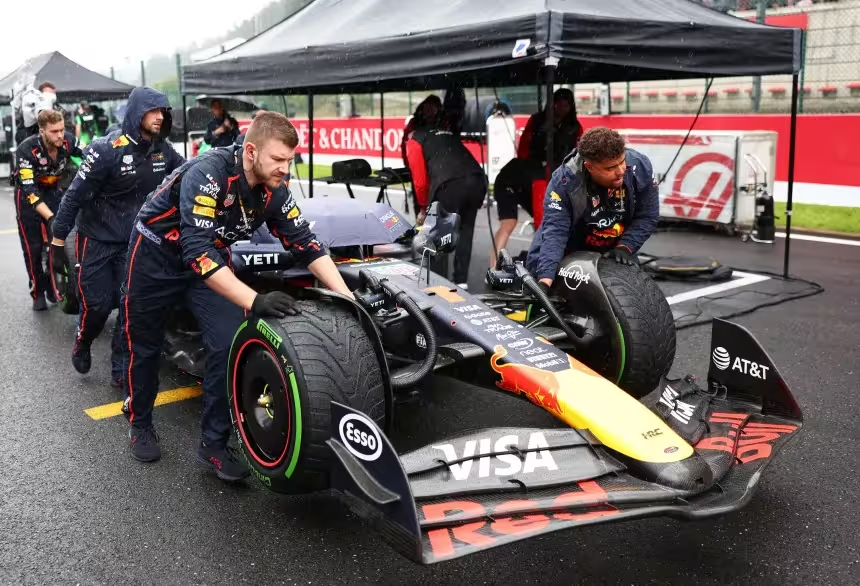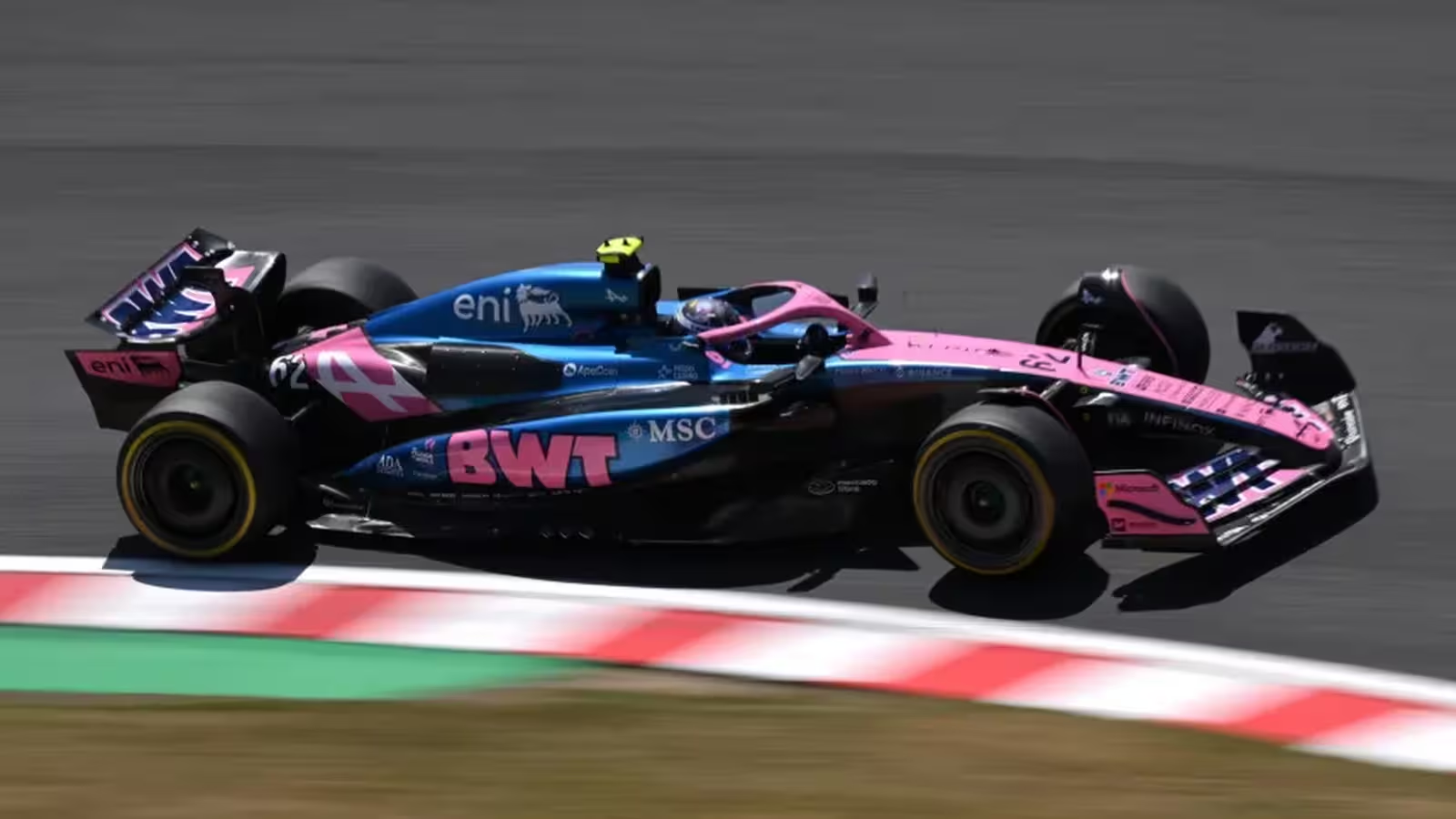8 Minutes
Introduction: The Belgian Grand Prix's Unpredictable Weather Strikes Again
Sunday’s Belgian Grand Prix at Spa-Francorchamps will long be remembered—not for the wheel-to-wheel racing that the iconic circuit is known for, but for a lengthy weather delay that left drivers, teams, and fans frustrated and asking hard questions about Formula 1’s approach to rain-impacted races. The unpredictable Ardennes microclimate delivered blazing sunshine and then torrential rain within hours, turning the event into a test of patience rather than outright car performance or driver skill. The result? Lessons for F1, tire suppliers, and event organizers alike.
The Drama Unfolds: Rain Halts the Grand Prix
By the time Sunday rolled around, hopes were high for another classic Spa showdown. However, after earlier downpours curtailed the Formula 3 and Formula 2 support races, additional heavy rain hit just as F1 cars lined up. Although the formation lap began as planned, visibility dropped so sharply that drivers struggled to see the cars ahead—prompting race control to abandon the start procedure and send everyone back to the pits. What followed was almost two hours of waiting, with only the circuit DJ and umbrella vendors enjoying a sales boost as an audience of fans grew restless.

On-Track Impact: Safety First, Excitement Last
Eventually, the race began—albeit at a crawling pace behind the safety car for four laps, with green flag conditions resuming for a shortened 39-lap sprint. But with the critical early action deflated and track conditions rapidly improving, the race failed to deliver on its dramatic potential, leaving everyone wondering what could have been.
When Weather Trumps Machinery: The Car Setup Dilemma
The stop-start nature of the race at Spa once again underscored how rapidly changing weather can render even the best-dialed car setups ineffective. Teams like Red Bull had committed to wet configurations to maximize grip and safety, but once the track began to dry, those choices became a disadvantage. For drivers, particularly title contenders like Max Verstappen and Charles Leclerc, these high-stakes setup gambles can make—or break—a Grand Prix, especially when race procedures are changed last-minute.
Would an Earlier Start Have Changed Everything?
A major talking point in the aftermath addressed F1’s decision to begin races at 3 pm local time. Adopted in recent years to boost global TV viewership, this timing can spell disaster at venues like Spa, where afternoon storms are always a possibility. Looking at the weather forecast, which clearly predicted rain, many, including Verstappen, argued that an earlier start could have preserved the race's integrity and delivered more thrilling on-track battles. For diehard motorsport fans, a correctly timed race is every bit as crucial as the right tire compound or a well-calculated pit stop.
FIA Flexibility: Is It Time For Adaptive Scheduling?
Other global motorsports, such as MotoGP, have shown that moving a race start earlier—even on short notice—can protect both safety and spectacle. With F1’s robust broadcasting infrastructure, implementing a flexible scheduling protocol at rain-prone tracks like Spa and Suzuka could help prevent future farces and unnecessary strategic confusion.
Tire Technology: Are Pirelli's Wet Compounds Letting F1 Down?
The events at Spa reignited debate around Pirelli’s full wet tires. Despite waterlogged track sections, all teams started on intermediates, favoring them due to the full wets’ infamous lack of grip and their tendency to generate excessive spray with modern F1 cars. The issue is compounded by the current tire width (405mm compared to the 325mm of 2017), which equates to increased standing water—a recipe for aquaplaning and limited visibility.
Technical Innovations and Future Developments
To address these challenges, the FIA and Pirelli have experimented with wheel covers to reduce spray. Unfortunately, 2024's prototypes failed to provide sufficient improvements. Pirelli is now pursuing a 'crossover' tire—blending characteristics of its wet and intermediate compounds—aiming for a safer, more competitive rain tire by F1’s 2026 season, when sweeping regulations will also remove ground effect aerodynamics (which currently exacerbate the spray problem). Teams are collaborating closely with Pirelli at test circuits like Jerez and Fiorano to ensure the next generation of rain tires will allow for racing, not just parade laps.
Performance Under Pressure: How Rain Transforms F1 Car Dynamics
Formula 1 cars are engineering marvels, designed for maximum performance in precise conditions. In the wet, everything changes: the car’s aerodynamic balance, braking distances, and tire grip levels can fluctuate every lap. Teams must constantly adapt their vehicle setups, from ride height to downforce, to handle less predictable conditions. At Spa, these challenges were on full display. Red Bull’s wet-optimized configuration initially looked promising for Verstappen, but as the track dried, McLaren and Ferrari, who hedged their setups for changeable conditions, gained a critical performance edge.
Comparing the Belgian GP: How Do Modern Races Stack Up Against F1's Wet Legends?
Historically, the Belgian Grand Prix has offered some of F1’s most dramatic wet races, with legendary performances by drivers like Ayrton Senna and Michael Schumacher. However, the balance between safety and spectacle has shifted. Modern safety protocols and more conservative race procedures aim to protect drivers, but can also diminish the excitement. By contrast, the recent Spa event felt more like an administrative challenge than a test of driver bravery or technical prowess.
Market Positioning: F1’s Brand and the Importance of Rain Racing
Formula 1’s position as the pinnacle of motorsport is built, in part, on its ability to race in diverse and challenging conditions. Iconic images of cars powering through spray at Spa or Suzuka are part of the sport’s DNA, appealing to hardcore fans and contributing to its reputation for technological excellence. The events at Spa have triggered important conversations in the F1 paddock and among manufacturers about how to ensure these moments aren’t lost.
What Should F1 Do Next? Recommendations for the Sport's Future
While updated tire technology and the phasing out of ground effect aerodynamics promise improvements for 2026 and beyond, Formula 1 must also introduce a formal protocol to address sudden downpours. This could include:
- Flexible start times at rain-prone tracks
- Clear rules on when wet races should be started behind a safety car
- Mandated use of improved intermediate or crossover wet tires
- Enhanced driver and fan communication regarding delays and procedures
These steps would maintain spectator interest and uphold Formula 1’s core values of safety, cutting-edge performance, and genuine racing action.
Conclusion: A Lesson for the Future of Racing
The 2024 Belgian Grand Prix at Spa-Francorchamps provided a vivid reminder of how weather can upend even the most meticulously planned racing events. For Formula 1, there are clear takeaways: invest in superior tire technology, adapt race management protocols, and remain agile enough to protect both safety and spectacle. As the 2026 regulation changes approach, the hope is that future Belgian GPs and wet-weather classics will be remembered for breathtaking skill and strategy—not for delays and what-ifs.
By learning from this year’s missteps, F1 can ensure the legacy of grand wet races continues, guaranteeing excitement for passionate car enthusiasts worldwide and cementing the championship’s place at the very top of international motorsport.
Source: autoevolution


Leave a Comment